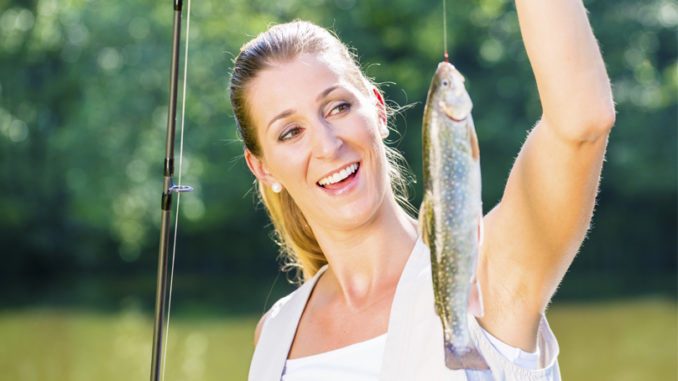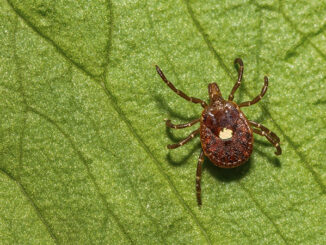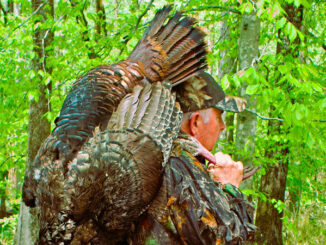
Get yourself wet and you’ll expand your options
North Carolina’s 2020 Delayed Harvest season for cold water trout opens Saturday, June 6. From 6 a.m. to 11:59 a.m., youth anglers 17 and younger have the run of 34 trout streams and lakes, mostly in the western part of the state. At noon, all N.C.-licensed anglers can fish without gear or bait restrictions. They also need not worry about minimum size limits.
Each angler can keep a limit of seven trout per day. And let’s face it, catching a limit, especially on the opening weekend of Delayed Harvest season isn’t a rare feat by any means. But anglers can increase their chances with a few tips.
I live in South Carolina’s lowcountry, and I grew up a flatlander, living in the middle of the Palmetto State. So what do I know about limiting out on a mountainous trout stream? I had the good fortune of living in western North Carolina for a few years. Cane Creek in Mitchell County was walking distance from my house. I fished it often and caught many a limit there.
But I never really learned the most effective way to fish that creek — or many creeks just like it — until another flatlander friend came up for a visit. Follow these tips and you’ll never have a problem limiting out on trout.
Ditch the land during Delayed Harvest
Get off the banks: On many of these trout streams, the banks are severely overgrown, with a few flattened out spots where anglers often fish. The overgrowth extends over the water, giving trout great hiding places. It’s impossible to cast very close to the bank you’re standing on because of this overgrowth. The opposite banks are just as bad, forcing you to cast farther off the bank than the fish like to hold.
So your best bet is to get in the stream, assuming it’s shallow enough. On my friend’s first trip to Cane Creek, he waded right down the middle. This allowed him to cast under all the overgrowth. He could also see deep cuts in the bank where trout were hiding. It’s truly not possible to cast to these fish from either bank. The middle of the stream is where it’s at.
Wear good, quality polarized shades: When I joined my friend in the stream, he would walk a few steps, pause, and stare in one area of water along the banks. Following his lead, I did the same. And after a few minutes of staring at what appeared to be lifeless water, my eyes would finally adjust.
Almost magically, a line of trout would appear, facing upstream. They were literally lined up, single file, like bicycle racers, one behind the next.
Cast to the fish in the front: After putting several fish on our stringers, we made a cast to the middle of a line of fish. They scattered, and either stayed scattered or took up too far away for us to see them, no matter how long we stared into the water. Casting in front of the first fish was always the best bet.
This is no place for artificial lures
It was usually a quick bite as soon as our bait got in front of the first fish. But on the occasion that the fish missed it — or if we’d miss on the hook set — that fish would calmly swim to the back of the line. Another pitch of bait to the front of the line would usually result in a quick hook set on what had previously been the second fish in line.
Forget spinners and crankbaits: For most anglers, using artificial lures is more fun than natural baits. I agree for the most part. But this type of fishing doesn’t lend itself to casting lures that need to show any action to entice a bite. You need something that you can pitch right in front of a fish. And it needs to either squirm, have a strong smell, or both.
Forget crickets and worms too: Okay, this is debatable for sure. You’d be hard-pressed to toss a live cricket or earthworm in front of a hungry trout and not have it devoured quickly. But even on opening day of Delayed Harvest, especially when adults must wait until noon to wet a line, these fish have seen plenty of crickets, and plenty of worms.
Pautzke Balls of Fire are convenient and effective
So what’s the best bait? For me, nothing beats Pautzke’s Balls of Fire salmon egg baits. These are brightly-colored, have a strong smell, and probably look a lot like what stocked fish have grown accustomed to eating while at the hatchery. For multiple colors, get a few different jars of the Fireballs as well. Switch colors when/if the bite slows.
Don’t go to the well too often: After catching two or three trout from one line, shuffle on downstream and find another one. The fish get wary after a few disappear from their little school, and lockjaw sets in.
Don’t waste time trying to turn them back on. You’ll find plenty of schools as long as you stay in the stream, use your polarized shades, and allow your eyes some time to adjust.
A handful of publicly-accessible mountain trout water remain closed due to COVID-19. Click here to see what’s closed.
The NCWRC stocked fewer trout waters than normal this year. Click here to get the full stocking schedule.





Be the first to comment